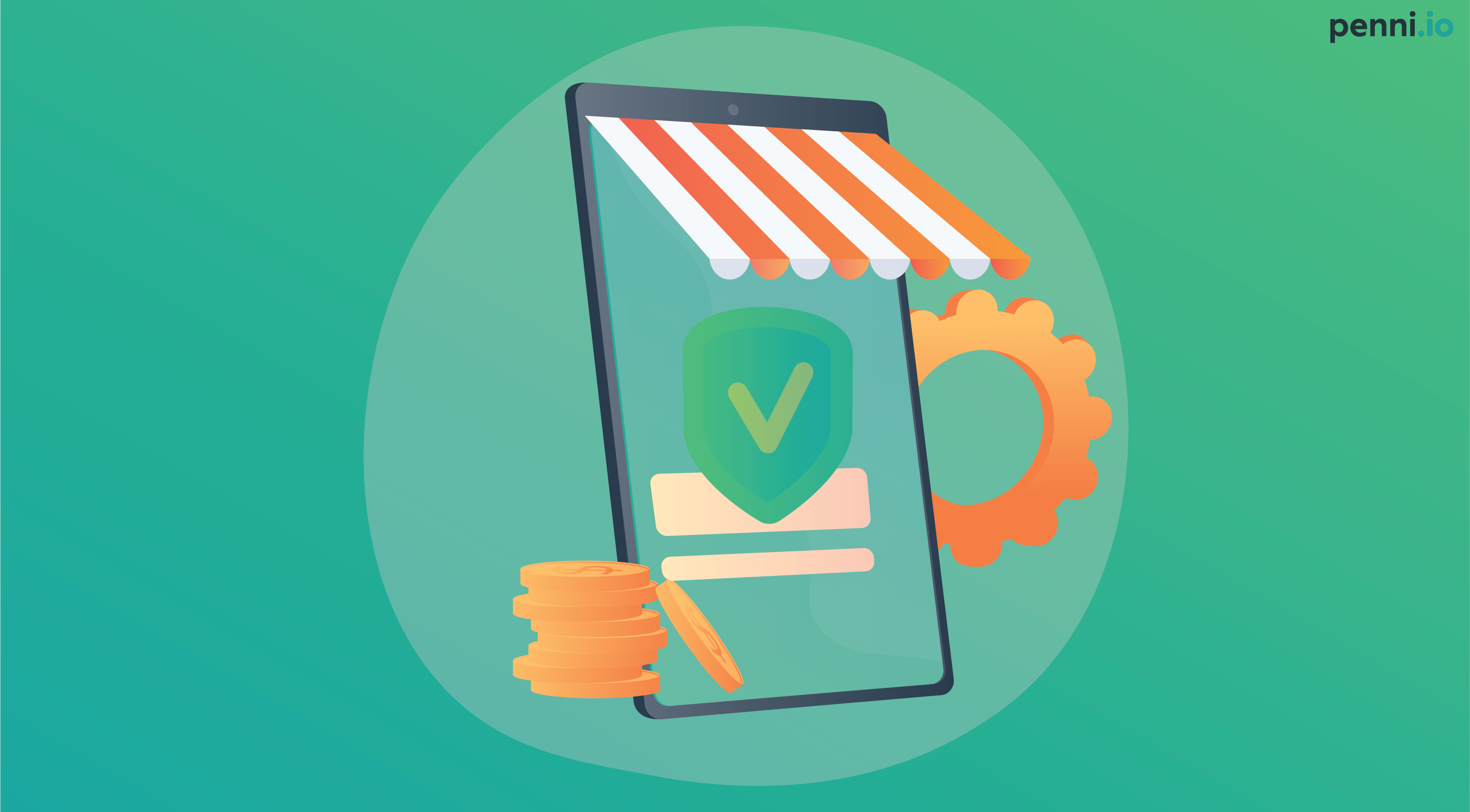The Secret to Selling Insurance? It’s All About Proximity

Selling insurances is tough and costly. Mainly due to the indisputable fact that most customers don’t exactly find insurance attractive to think about. Driving down the cost of sales and exposing the potential customers to insurance products in a time of their interest, is a game about digitalization and proximity played far away from the insurance industries home field.
Natural desirable products
I bet if you looked at the entire span of human history and catalogued all the time someone has woken up thinking ”I should get some insurance,” you could probably fit all of it on a single index card.
That makes insurance unusual because other consumer products don’t share that struggle. Every day, countless people wake up and think, “I should get a new smartphone (or car, or house – oh heck, why not all three?).”
In fact, those products are so desirable that the best way to sell insurance is to package it alongside them. These days, it’s becoming much easier to sell insurance where people are already doing their shopping: on third party digital platforms.
How Your Customers Value Security
We all know about Maslow’s pyramid of needs, which orders our needs from most essential (food, shelter) to least (feeling useful). Now, try to figure out where insurance fits in there. You probably lumped it in with ”security,” near the base of the pyramid.
But if it’s such a fundamental need, how come insurance providers struggle to sell their products? Why are plenty of people choosing to remain uninsured or underinsured while meeting less important needs?
The answer is context. What Maslow, along with widespread customer-centric theories, fail to see is what psychologists have known for years. Our needs can’t be arranged in a solid, unchanging pyramid. How we prioritize our needs shift given the circumstances and what we’re exposed to.
Just how strongly you want to go bungee jumping depends on whether you’re looking after your kids or whether you’ve had five beers and really want to impress your buddies. With kids around, you probably rank your need for security quite high. After that fifth beer? Not so much.
That might be an extreme example, but it illustrates an everyday reality for your customers. How strongly they feel the need to buy insurance depends on their current context, their fleeting preferences, and how they feel at any given moment.
In the Land of the blind…
The problem is that insurance companies lack insight into those important contexts. Insurance is a product that affects people’s everyday lives, yet the insurance industry has almost no data on the everyday lives of its customers. Providers simply have no idea how their customers think or act.
This leads them to rely on two outdated and ineffective strategies:
Strategy 1: Pull the Customer In
”We’ll put the word out there through different channels, and then wait patiently by the phone for the customer to make the first move. If we’re behind in sales, we’ll double our spending on the channels and wait aggressively by the phone.”
This approach is:
Ineffective. Insurance is almost always a means to an end — customers care about the thing they’re insuring, not the insurance itself.
A “spray and pray” game. We seldom know what the end goal of the customer is. We’re really guessing at what they want and hope our message resonates with them.
A race to the bottom. Desperation within the industry drives up the prices of the channels and encourages expansions to reach and exposure.
And even after spending hand over fist to try to get the customer’s attention, you still have to rely on their pre-existing knowledge of insurance products. Unless they know what the products cover, when they’re mandatory, and so on, they won’t even realize they need to talk to an insurance agent, let alone one selling your products.
Strategy 2: Push Your Products on the Customer
”We’ll spend huge amounts of time and money cold selling to people who might not even need or want insurance right now. But if we do it enough, we’ll probably find a few people who are ready to buy.”
This approach is:
- Wildly ineffective. Insurance is an odd duck. In most other industries, you’d be laughed out of the boardroom for suggesting you go knocking door to door to sell your product. But in insurance, it’s par for the course. We should hold the insurance industry to a higher standard than peddling newspaper subscriptions, off-brand vacuum cleaners, and religious tracts.
- Difficult to control. Insurance agents are only human, and humans don’t always do well with rulebooks and guidelines. If you invest in your agents, they might comply with company best-practice. But the keyword here is “might.”
- Hard to scale. Maintaining a fleet of insurance agents who are constantly seeking new customers and pitching to them is resource-heavy. To keep the same level of quality while increasing your reach or growth, you have no choice but to hire even more resource-heavy investments in staff.
- Insecure. The basic foundation of your business (the way potential customers buy from you) is now its weakest link. You can treat your agents nicely, but if your competitor offers them an extra 500 euro per month, you might have to kiss their talent (and customer portfolio) goodbye. Relying on this approach means you’re constantly exposed to a big risk.
Hacking Maslow’s Pyramid of Needs
To become more successful, insurance providers need to stop assuming that because they’re selling an important product, people will want to buy it. Instead, they have to learn how to hack Maslow’s pyramid: how do you convince customers that they should buy the insurance and buy it now?
The trick is proximity. This is what third-party insurance distributors understand but most insurance providers don’t seem to know yet.
In Denmark, third parties account for 40–60% of all insurance sales. So, let’s look at how these third parties use proximity to make insurance seem like an urgent need instead of a nice-to-have.
Selling insurance effectively comes down to using two types of proximity: transactional proximity and top-of-mind proximity.
Transactional Proximity
Owning insurance is never the end goal for the customer. What they really want is a nice car, a safe home, some security for their loved ones. Insurance is a means of achieving those things.
We feel more protective of things when they’re new. That’s why we spend time waxing and buffing the hood of the car for the first few months, even if we stop bothering with it once we’ve owned it for a year. It’s also why insurance should be offered as close as possible to the time of the transaction — when the product still feels new and special instead of familiar and ordinary.
The further you get from the moment the customer makes their investment, the harder it is to sell them insurance to protect that investment.
If customers evaluated an insurance product based solely on its features and their objective need for security, it wouldn’t matter when you make your offer. But people’s need for security is flexible, so you need to time your offering so it coincides with their major investments.
Top-of-mind Proximity
When we feel exposed to a risk, we seek protection.
The risks often don’t change that much over time, but our subjective assessment of them does. If you watch a movie that depicts a break-in robbery, your risks of having your home broken into have not gone up whatsoever — but you sure do feel more vulnerable than you did an hour ago.
We go through most of our days ignoring risk (if we didn’t, the intense stress would become a chronic medical condition), but we reach for protection when something puts a risk at the top of our minds. The Nobel prize-winning behavioral economist Daniel Kahneman demonstrated this by showing that the U.S. State Department issuing a warning of possible terrorist attacks in Thailand in the Spring of 1991 resulted in travellers to Thailand being willing to pay a higher premium on the insurance that covered death by terrorism than they would for a normal life insurance policy that covered every type of death (including death by terrorism).
Thankfully, insurance providers don’t have to wait for the threat of terrorism to sell their insurance products. There are plenty of everyday situations that place us on high alert for certain risks and make us more likely to want to buy insurance to cover those risks.
Most people who have young children might not feel a pressing need to buy children’s insurance. But if you were to ask them when they’re in the middle of evaluating car seat options, I’m willing to bet a lot of them would find the offer compelling.
Free Download: Why digitizing insurance partnerships is essential for sales growth (Whitepaper)
Taking Advantage of Digital Proximity
When it comes to digital insurance sales, the transactional proximity and the top-of-mind proximity are often at the same spot. A customer deciding to buy a new car, for instance, is both excited about making the purchase but also nervous about damaging it in an accident.
That’s convenient for insurance providers because it gives you a targeted spot where you know more customers are ready to buy your product.
By presenting them insurance products alongside those purchases, we make it easy and simple for them to mitigate that risk — right there, on the spot.
Do you want to know everything about embedded insurance? Check out our dedicated page here.
Special thanks to our expert Simon Bentholm.



